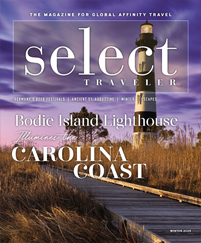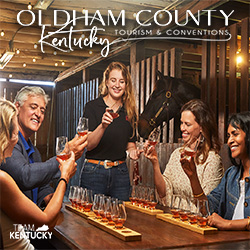Living History Farms
Urbandale, Iowa
The Living History Farms in Urbandale, Iowa, showcases the evolution of American agriculture. Guides demonstrate how Native Americans grew crops in the 1700s. They also model how farmers used oxen to open the prairies in the 1850s and how horses revolutionized agriculture in the 1900s.
One of the three working farms is the 1700 Ioway Indian Farm, where Indians tanned hides in the sun next to bark lodges and cooked on an open fire. The 1850 Pioneer Farm represents a 4-year-old farm that was established when Iowa became a state in 1846. And on the 1900 Horse-Powered Farm, draft horses pull machinery to plant, cultivate and harvest the property’s three main crops.
The 1875 Town of Walnut Hill re-creates a bustling frontier town, with craftsmen and merchants along the community’s main street. The Victorian Domestic Spaces tour takes groups inside the Italianate 1870 Flynn Mansion and the Gothic-style Tangen Home. At the Flynn Mansion, groups can enjoy Victorian teas, and in winter and spring, the staff offers cooking classes, with instruction on topics such as wood-stove cooking and Norwegian baked goods.
“The town of 1875 is the most robust for groups to see, and they host historic dinners in two venues,” said Jessica O’Riley, tourism communications manager at the Iowa Tourism Office. “From October through March, horse-drawn wagon rides take guests to the 1900 farm, where they’re served foods from the period followed by Victorian games in the parlor.”
Farm at Prophetstown
Battle Ground, Indiana
As part of Prophetstown State Park, the Farm at Prophetstown illustrates Midwestern farm life. Interpreters use antique tractors to work the fields, and they complete barn chores twice daily. Visitors can help feed livestock, collect eggs and work in the garden. Livestock includes Standardbred horses, a miniature horse, heritage chicken breeds, Hereford cattle, Oxford/Suffolk cross sheep and Berkshire hogs.
Buildings include a replica Sears Roebuck and Company catalog farmhouse, a barn, a corn crib, chicken coops, a hog house, a machine shed, a milk house, a tenant house and a brooder house. The farm is also a training ground for sustainable agriculture, homesteading and gardening. Farm-to-table cooking, sewing and quilting are practiced here, too.
In addition to touring the farmhouse, groups of up to 40 can have meals inside, including breakfasts that feature bacon processed on-site and pasture-raised meats. In warmer months, dining extends onto the front porch and yard.
“Group leaders can plan a catered meal that can be served in the barn, or typically, groups rent a tent for the side yard between the house and barn,” said Ashley Gregory, director of sales at the Visit Lafayette-West Lafayette Convention and Visitors Bureau. “The farm also hosts farm-to-table dinners featuring five courses.”
In spring, a tractor-drawn trolley navigates fields of wildflowers. It takes groups to the re-created Native American village, also in the state park, where naturalists conduct Native American programs. In the fall, hayrides celebrate the prairie.
Tallgrass Prairie National Preserve
Strong City, Kansas
Grass meets sky, stretching to the horizon at the Tallgrass Prairie National Preserve in Kansas. The visitor center offers a 10-minute introductory film. Guided tours of the limestone, 1881 Spring Hill Ranch house; the three-story, limestone barn; and outbuildings showcase ranching life.
“At one time, there were 170 million acres of tallgrass prairie, and today, about 4 percent remains, mostly here in the Kansas Flint Hills,” said Heather Brown, chief of interpretation and visitor services at the Tallgrass Prairie National Preserve. “Ranger-narrated bus tours during summer months introduce groups to the prairie’s natural and historic aspects, allow them to see our 80-plus bison herd and get people into the prairie to actually stand in the grass.”
Summer brings thriving prairie grasses and cattle grazing as clouds skirt along the rolling hills. Fall arrives with tallgrasses reaching their maximum heights, from waist-high to well over a person’s head. Seed heads are in bloom, and their stems turn hues of gold and bronze.
Forty miles of hiking trails weave through wildflowers that peak in late May and early June, but continue to bloom through the fall. The Southwind Nature Trail winds its way across a tree-lined creek bed, and the Bottomland Trail features interpretive panels about the prairie’s natural and cultural history.









